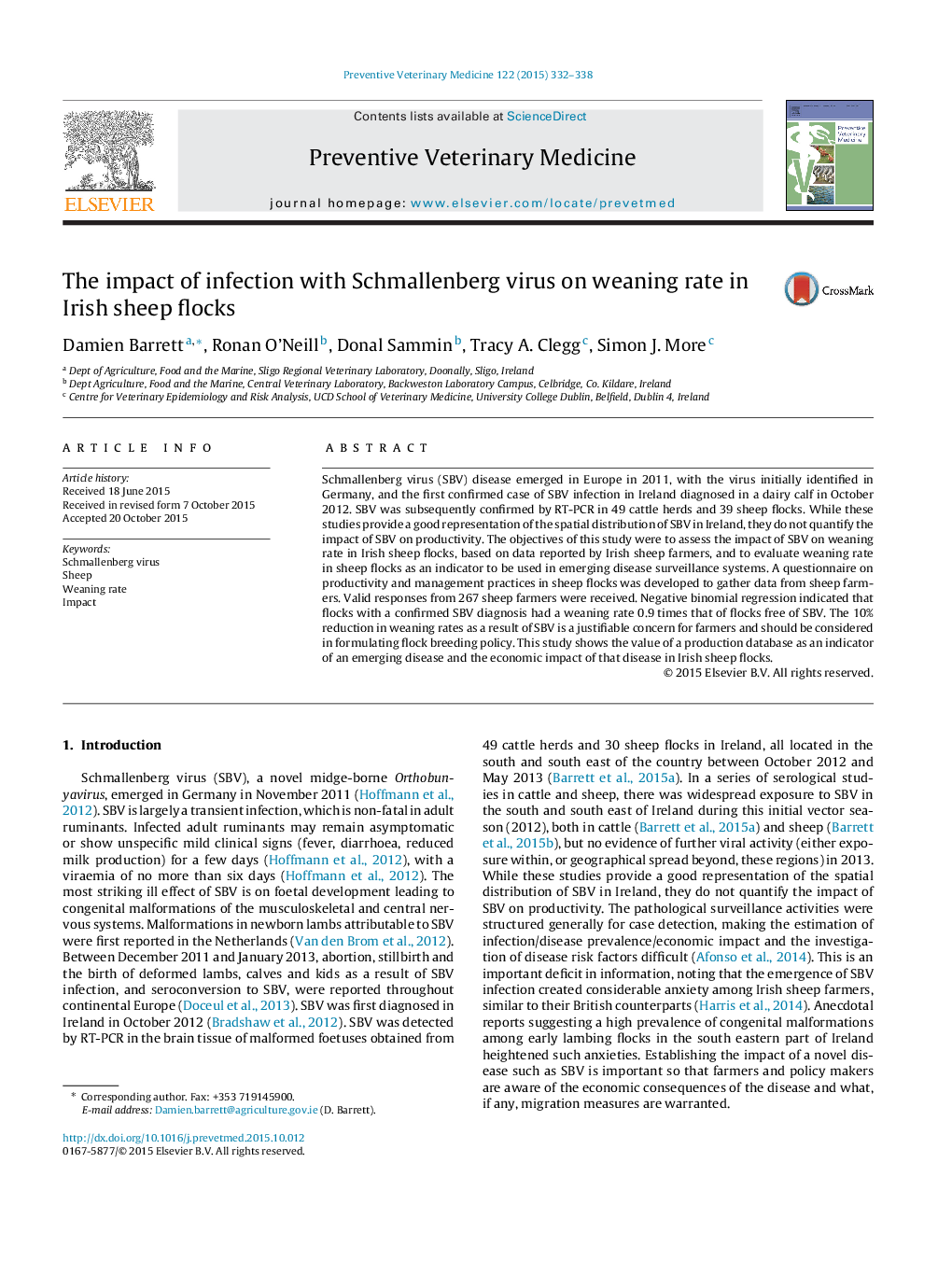| Article ID | Journal | Published Year | Pages | File Type |
|---|---|---|---|---|
| 5793246 | Preventive Veterinary Medicine | 2015 | 7 Pages |
Abstract
Schmallenberg virus (SBV) disease emerged in Europe in 2011, with the virus initially identified in Germany, and the first confirmed case of SBV infection in Ireland diagnosed in a dairy calf in October 2012. SBV was subsequently confirmed by RT-PCR in 49 cattle herds and 39 sheep flocks. While these studies provide a good representation of the spatial distribution of SBV in Ireland, they do not quantify the impact of SBV on productivity. The objectives of this study were to assess the impact of SBV on weaning rate in Irish sheep flocks, based on data reported by Irish sheep farmers, and to evaluate weaning rate in sheep flocks as an indicator to be used in emerging disease surveillance systems. A questionnaire on productivity and management practices in sheep flocks was developed to gather data from sheep farmers. Valid responses from 267 sheep farmers were received. Negative binomial regression indicated that flocks with a confirmed SBV diagnosis had a weaning rate 0.9 times that of flocks free of SBV. The 10% reduction in weaning rates as a result of SBV is a justifiable concern for farmers and should be considered in formulating flock breeding policy. This study shows the value of a production database as an indicator of an emerging disease and the economic impact of that disease in Irish sheep flocks.
Keywords
Related Topics
Life Sciences
Agricultural and Biological Sciences
Animal Science and Zoology
Authors
Damien Barrett, Ronan O'Neill, Donal Sammin, Tracy A. Clegg, Simon J. More,
